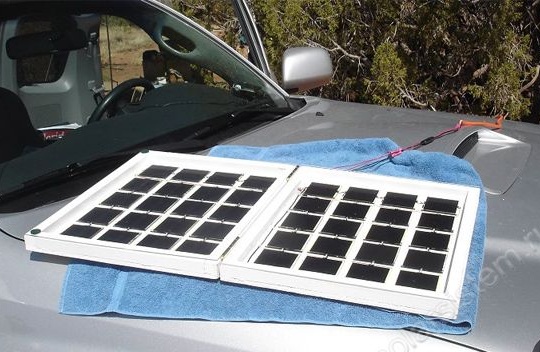
Recently, garden lanterns that are charged from solar cells have become very popular. They are quite convenient to use and cheap, therefore, like many others, the author has acquired dozens of them. But over time, they still fail. However, the life of solar cells in them is much longer, as a result of which the author decided to use them to create a solar battery.
The materials that the author used to create this portable solar panel:
1) 40 elements with characteristics of 4.5 V and 0.25 W
2) plywood 6 mm thick
3) wooden blocks with a size of 20 by 20 mm
4) Schottky diode
5) soldering iron and related consumables
6) silicone glue
7) 12V batteries
8) converter 12 \ 220 V
Let's consider in more detail the design and stages of creating this solar panel
Before coming to the idea of creating a solar battery from broken flashlights, the author wanted to restore them, but the batteries used in them were not so cheap, and the bulb needs to be replaced, because it lost its transparency due to ultraviolet radiation for several years of service. Therefore, the only part that is really suitable for reuse is solar cells.
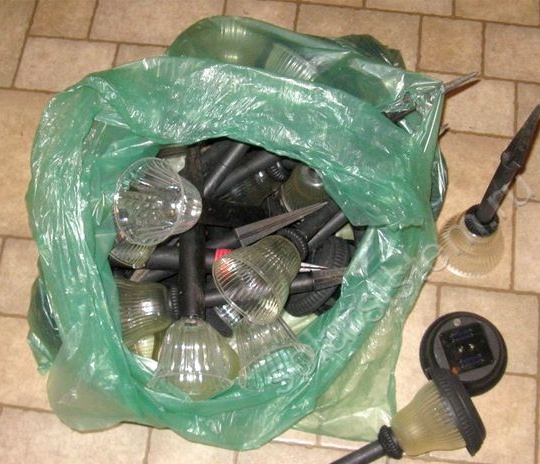
The service life of flashlights is about 5 years, while solar cells can work 5 times more, that is, about 25 years. The long service life of the elements used in solar lights is that they are coated with a transparent polyester resin, which protects the elements from external atmospheric exposure. In addition, the thickness of the elements coated with resin is 2 mm, while the usual thickness of the elements is 0.2 mm, the difference is palpable and gives strength and integrity to the elements.
Since the author acquired a lot of these lights at the time, it was decided to assemble a 15-watt solar panel design that could serve as a portable charge for a mobile phone or power a tablet and a portable TV.
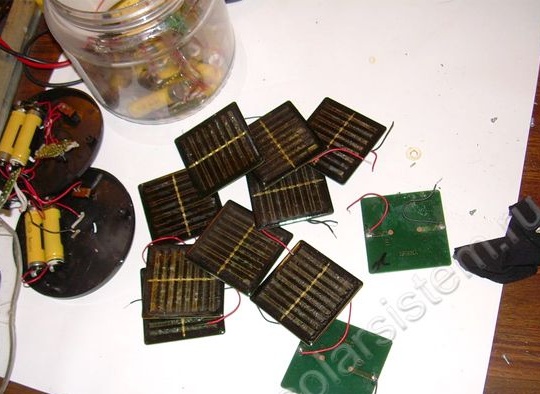
If you do not have old solar garden lights, but you are interested in the idea of a portable solar panel, then you can order such solar cells separately, but their price is significantly higher than for ordinary polycrystalline cells.
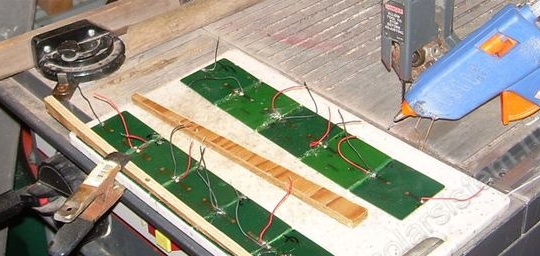
The voltage generated by each element is 4.5 V, therefore, to charge a 12 V battery, it is necessary to connect 4 such solar cells in series. All other elements will be so assembled in a line of 4 pieces and connected in parallel.This approach will achieve the necessary power to charge the battery even in not the most sunny weather.
Connection diagram of the elements of the solar panel
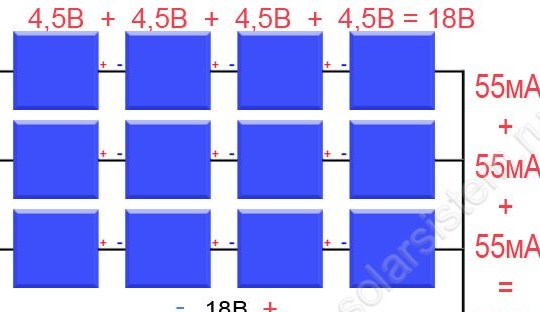
The author had 40 such elements, therefore, based on their size and this quantity, he proceeded to calculate the housing on which the elements of the solar panel would be mounted.
Since the author originally planned to make the solar panel convenient for transportation and use in traveling conditions, it was necessary that it fit easily in the trunk of a car. To reduce the size during transportation, the author used a folding case on the principle of a book. For the manufacture of the case, a 6 mm thick plywood sheet and a size of 50 by 32 mm was used, as well as 2 by 2 cm bars.

After assembling the case, the author marked the elements in it and fixed them with silicone glue:
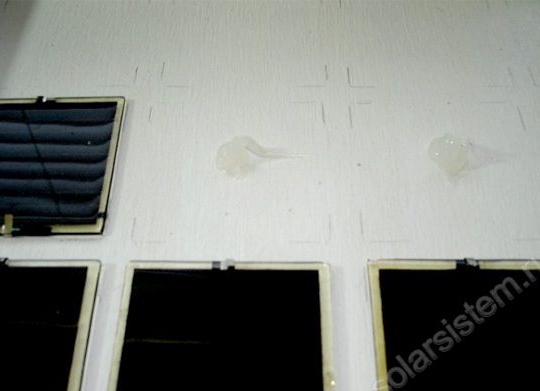

All elements were soldered to each other in one common chain.
In order to prevent the battery from being discharged in the absence of sunlight, a Schottky diode was installed at the output of the entire circuit of solar cells.
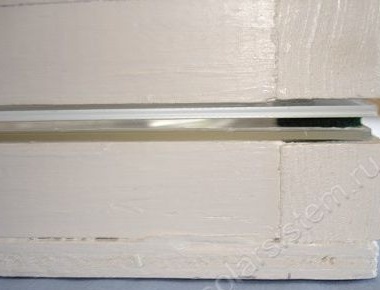
Although the elements themselves are protected by a layer of resin, the author nevertheless decided to use an additional measure of protection so that they would not be damaged during transportation in the trunk. To do this, he set org. glass. The author also took care of the integrity of the org. glass: pieces of felt were glued at its corners, which will help protect the glass from scratches when folding and unfolding the panel.

This is how a ready-made solar panel looks like, with an average power of about 15 watts.
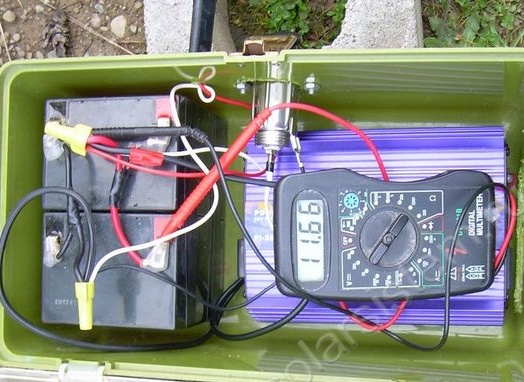
This power is enough to power a 12 V battery. In order to use a portable TV and other equipment, a 12 V to 220 V converter was used. Thus, the author received an excellent version of the solar panel from old garden lamps. The folding panel housing makes it easy to place it in a plastic container along with batteries and a converter. In such a container, the entire structure is very convenient to carry in the trunk of a car.
